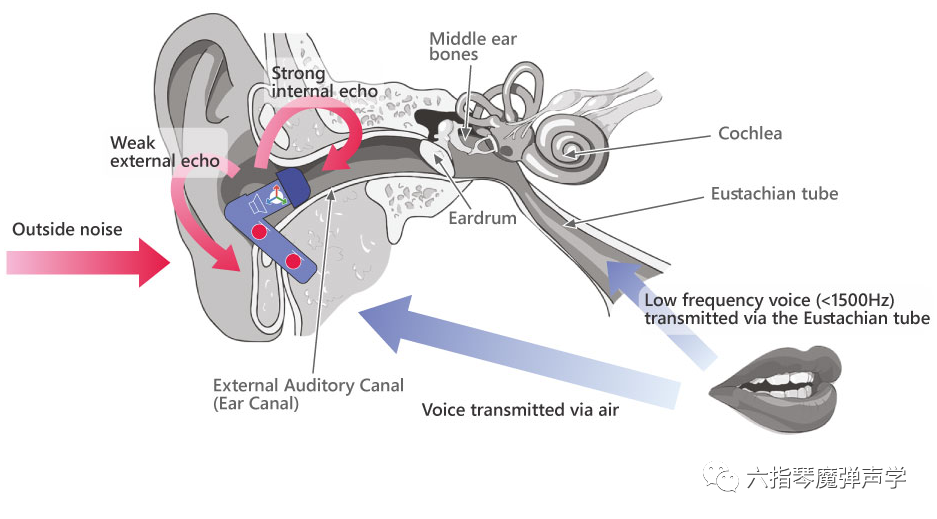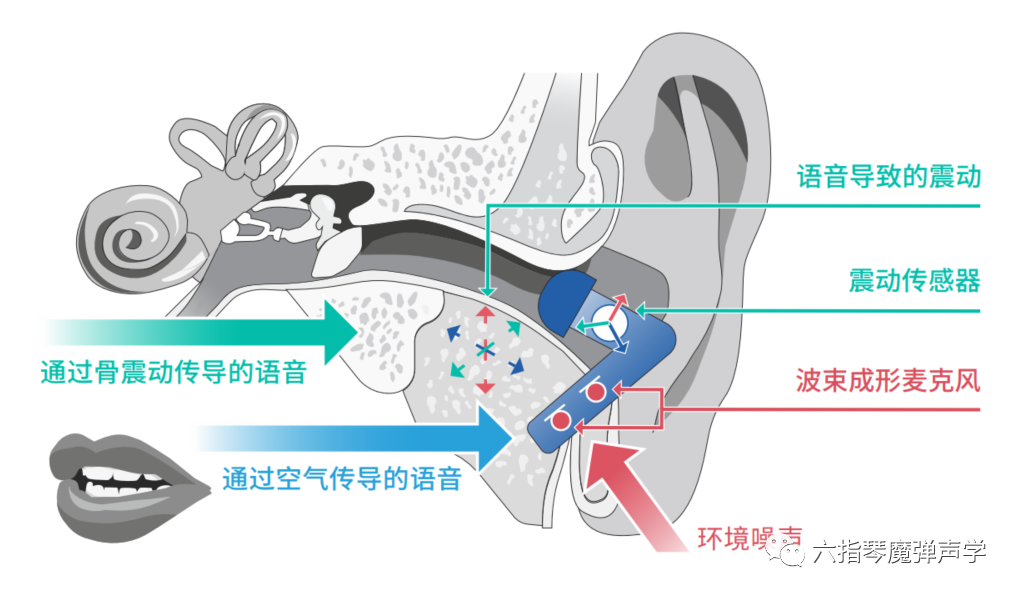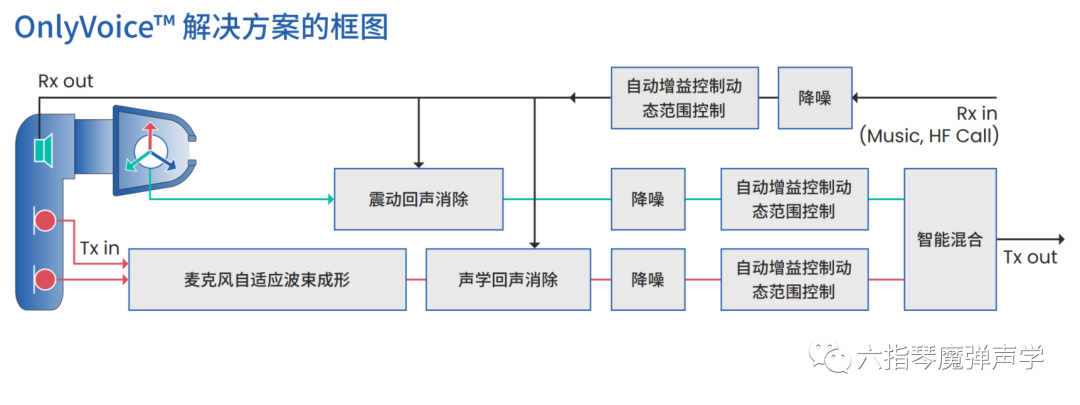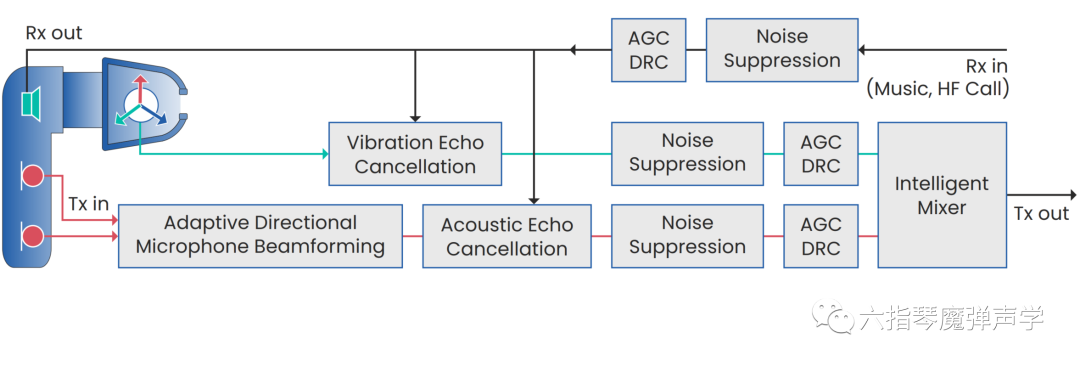
? ? 通過?機內?克?收集到的??語?,有機會給周邊環境噪聲所影響。

? ? 振動傳感器通過?骼和組織振動捕捉??的語?,不受環境噪?影響,但其頻率受到1 kHz的限制。


? ? ?克?信號中的聲學回聲和?傳導信號中潛在的“振動回聲”被消除。
利?降噪技術對聲學和?傳導語?信號進?清理。
?克?信號采??適應波束成形技術進?增強,該技術在?頻率下最為有效,并與?傳導信號中的低頻結合。
通過聲學和?傳導信號中語?和噪聲的級別和頻譜控制進?智能混合,以實現最佳聲?質量。


-
The user's speech picked up by the microphones in the earpiece maybe contaminated by ambient noise.
-
The vibration sensor captures the user's speech via bone and tissue?vibrations that is free of acoustic noise but limited to a frequency of 1 kHz.
-
Acoustic echoes in the microphone signals and potential "vibration echoes" in the bone conduction signal are cancelled.
-
Acoustic and bone-conducted speech signals are cleaned up using noise reduction technology.
-
Microphone signals are enhanced with adaptive beamforming technology, which is most efficient at high frequencies, and mixed with the bone conduction signal at low frequencies.
-
Intelligent mixing is controlled by the levels and spectra of speech and noise in the acoustic and bone-conducted signals to achieve the best sound quality.
2022年消費電子市場低迷,但是展望2023年,以手機為代表的消費電子市場將復蘇,而TWS耳機也將擴大滲透率,蘋果系TWS滲透率比較高,而安卓系陣營將成為TWS的重要增長點。降本,增效,提高自動化將成為行業熱點話題。為了進一步促進TWS產業交流,艾邦新建TWS產業鏈微信群,歡迎申請加入群聊。


